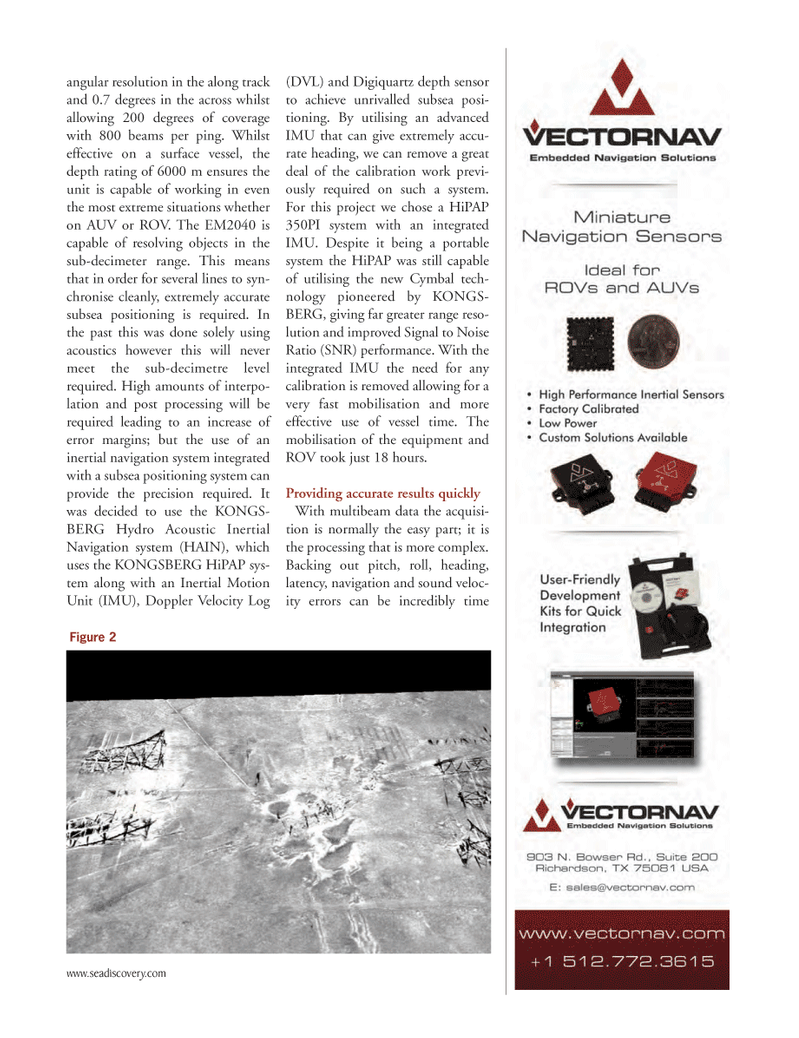
Page 73: of Marine Technology Magazine (March 2012)
Subsea Vehicle Report – Unmanned Underwater Systems
Read this page in Pdf, Flash or Html5 edition of March 2012 Marine Technology Magazine
www.seadiscovery.com angular resolution in the along track and 0.7 degrees in the across whilst allowing 200 degrees of coverage with 800 beams per ping. Whilst effective on a surface vessel, the depth rating of 6000 m ensures the unit is capable of working in even the most extreme situations whether on AUV or ROV. The EM2040 is capable of resolving objects in the sub-decimeter range. This means that in order for several lines to syn- chronise cleanly, extremely accurate subsea positioning is required. In the past this was done solely usingacoustics however this will never meet the sub-decimetre level required. High amounts of interpo- lation and post processing will be required leading to an increase of error margins; but the use of an inertial navigation system integrated with a subsea positioning system canprovide the precision required. It was decided to use the KONGS- BERG Hydro Acoustic Inertial Navigation system (HAIN), which uses the KONGSBERG HiPAP sys- tem along with an Inertial Motion Unit (IMU), Doppler Velocity Log (DVL) and Digiquartz depth sensor to achieve unrivalled subsea posi- tioning. By utilising an advanced IMU that can give extremely accu- rate heading, we can remove a great deal of the calibration work previ- ously required on such a system. For this project we chose a HiPAP 350PI system with an integrated IMU. Despite it being a portable system the HiPAP was still capable of utilising the new Cymbal tech- nology pioneered by KONGS- BERG, giving far greater range reso- lution and improved Signal to Noise Ratio (SNR) performance. With the integrated IMU the need for anycalibration is removed allowing for a very fast mobilisation and more effective use of vessel time. The mobilisation of the equipment andROV took just 18 hours. Providing accurate results quickly With multibeam data the acquisi- tion is normally the easy part; it isthe processing that is more complex. Backing out pitch, roll, heading, latency, navigation and sound veloc- ity errors can be incredibly time Figure 2 MTR#2 (66-81):MTR Layouts 2/22/2012 10:14 AM Page 73

 72
72

 74
74
